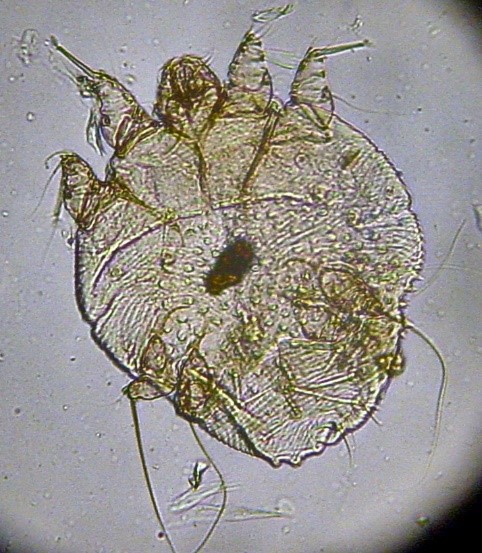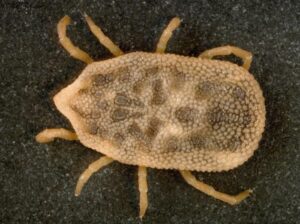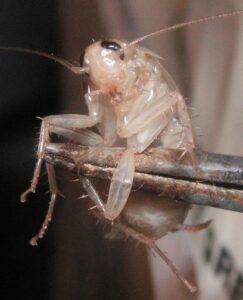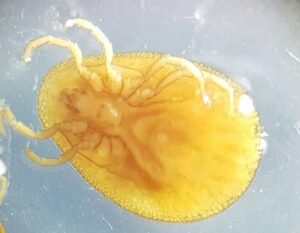Scabies, Itch Mites or Short-Legged Mites:
General Description
|
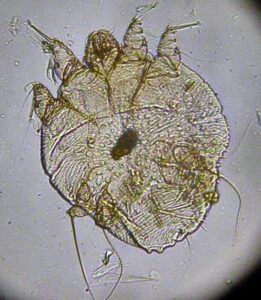
Credit: Kalumet |
Life Cycle and Common Characteristics
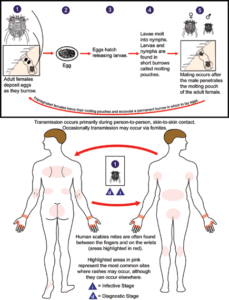
- The most important subfamily is the short-legged mite Sarcoptes scabiei, also called the itch mite.
- This species infests humans, horses, sheep, rabbits, cats, and birds, as well as cattle and camels.
- The female carrying eggs (their length ranges from a few millimeters to about 2.5 cm) digs skin-branching tunnels in thin areas of the skin, especially between the fingers, on the arms, on the hips, and on the genitals. The depth of the tunnel is from several millimeters to several centimeters.
- Only the adult female penetrates the host and paves the way for the remaining instars to enter. The female can bury herself in the skin within 3 minutes. She lays eggs at the end of the tunnel at a rate of 3 eggs per day for two months. Then, the female dies after that. The eggs hatch into larvae after 3-5 days, which may remain inside the tunnel or dig new ones. The larva molts twice within 6-8 days and turns into a full-fledged animal.
- Males (smaller than females) dig their own tunnels and then leave them to roam the surface of the skin in search of females.
- The life cycle takes 10-14 days.
Damage and Medical Implications
- Species of the family Sarcoptidae and Demodiidae cause scabies in humans. Manifestations and symptoms of scabies vary according to the type of mites causing it.
|
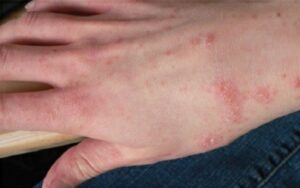
Credit: CDC |
- The general symptoms of scabies are the occurrence of infections and skin tumors accompanied by a severe itching tendency, which causes the infection to widen, the skin cracks, the serum comes out of it, and the hair falls out. If the affected place is rubbed with anything, it will rupture and ugly exfoliation will form. Some abscesses may form if the wounds are contaminated with bacteria.
- Transmission occurs primarily by the transfer of the impregnated females during person-to-person, skin-to-skin contact. Occasionally transmission may occur via bedding or clothing.

